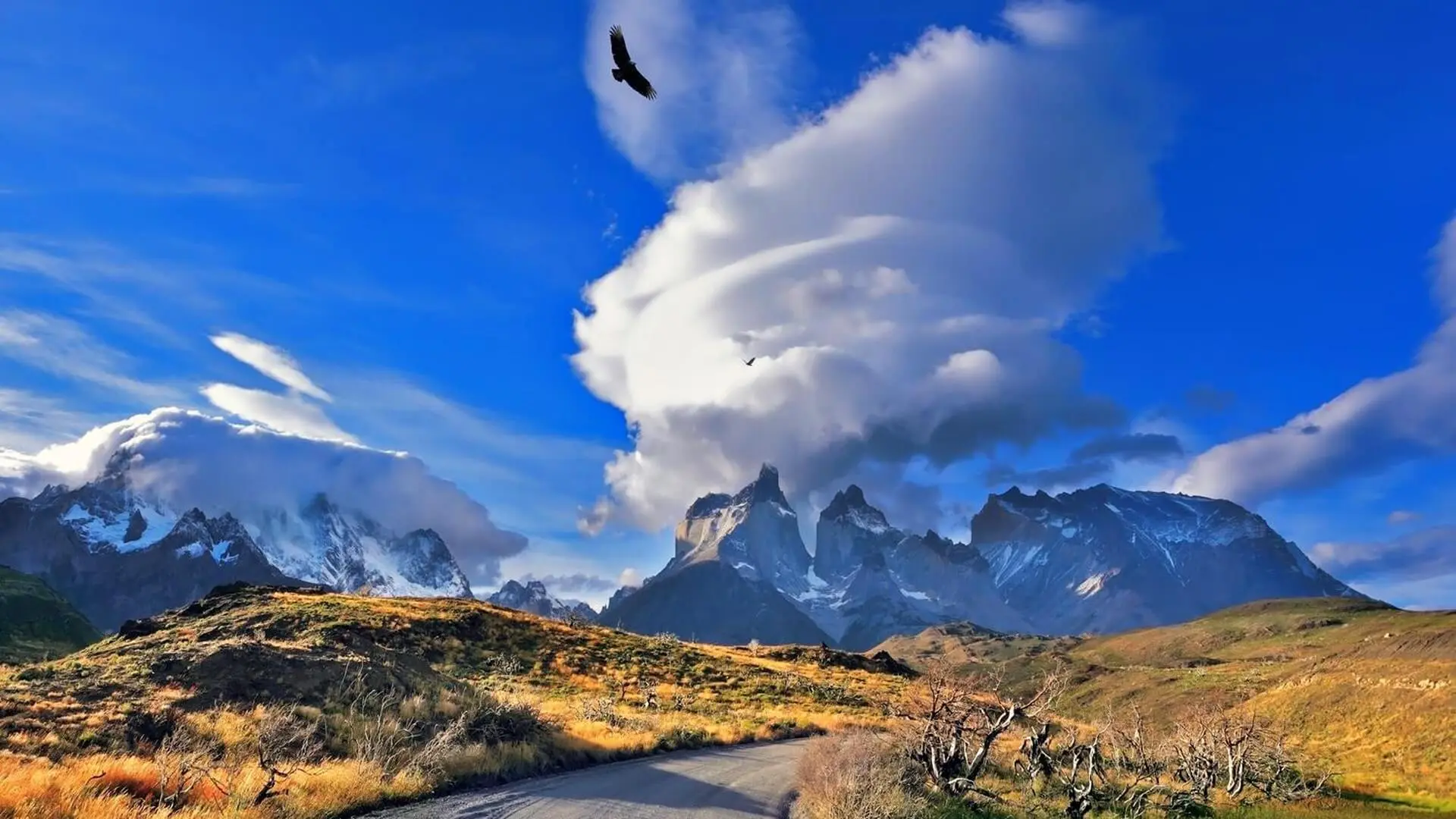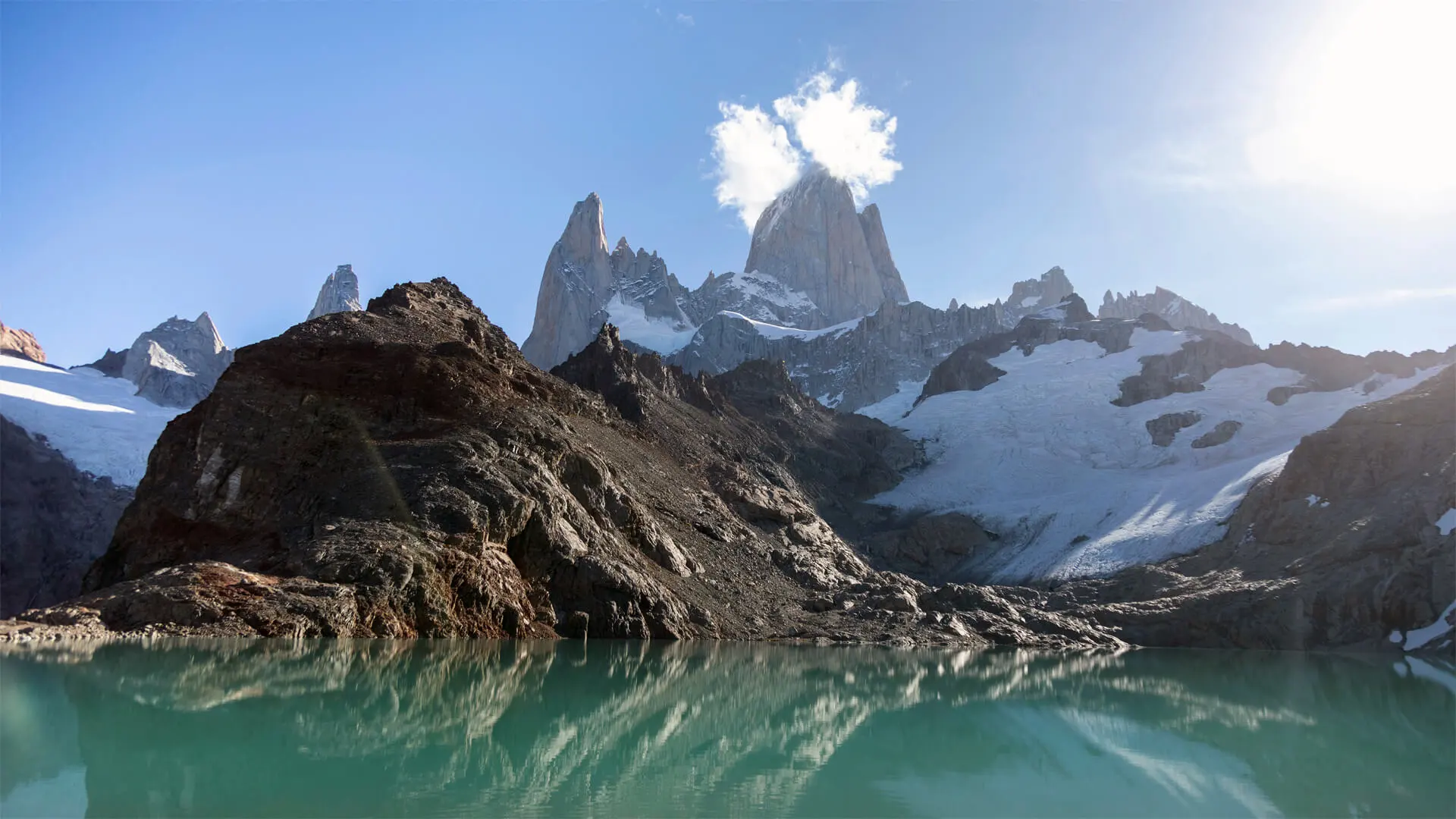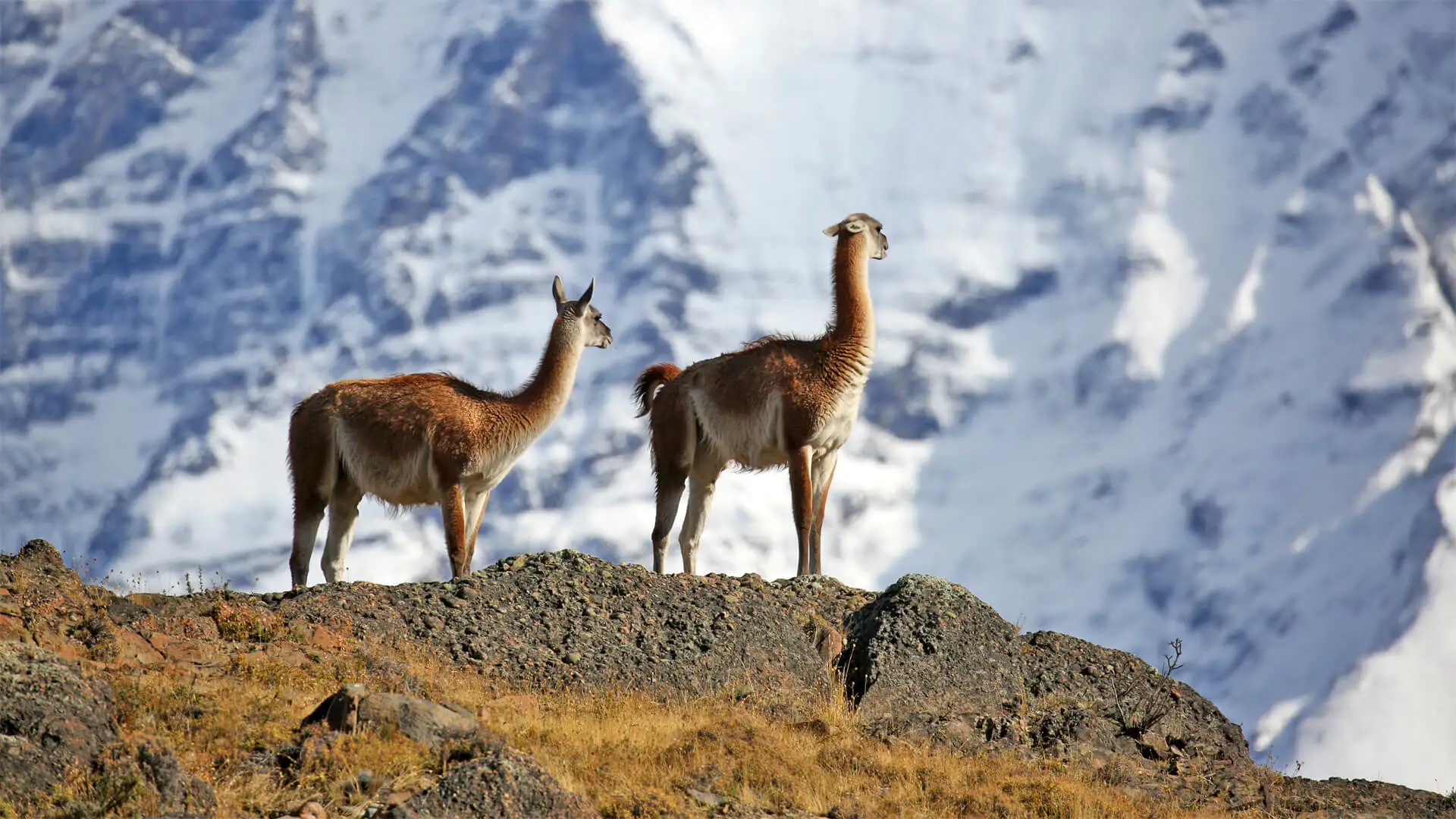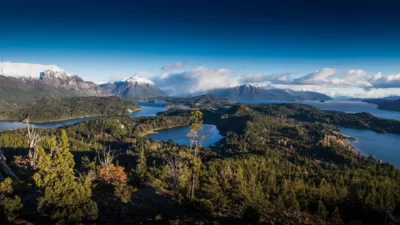
During a travel to Argentina and Chile, Patagonia will surely be one of your favorite travel destinations! It occupies a large part of Argentine and Chilean territories. Land of legends and spaces, Patagonia is sacred. Nature has brought together some of its most provocative inventions there and the three kingdoms – animal, plant and mineral – have come together to better sublimate themselves. It’s also a land populated by courageous and unique men.
History
Patagonia has been inhabited for over 10,000 years, as evidenced by numerous archaeological sites, including the captivating Cueva de las Manos in Argentina. When the first explorers arrived, southern Patagonia was the land of the southern Tehuelches, or Aonikenks. Despite its geographical isolation, it attracted European settlers relatively early, in particular British from the Falkland Islands, but also Scandinavians, Germans and Croatians.
From the 1850s-1860s, the pioneer town of Punta Arenas, in the extreme south of Chile, established itself as a hub of trade, taking advantage of the proximity of the Strait of Magellan and Cape Horn, the obligatory passage point for long-distance ships, then the birth of the immense estancias of Patagonia and Tierra del Fuego.
In the mid-1870s, adventurer Charles Musters, who left from Punta Arenas, was the first Westerner to travel through Patagonia alongside Tehuelche tribes. In the 1880s, in the wake of the famous “desert campaign”, the English imported sheep from the Falklands to the immense steppes of the province of Santa Cruz.
The government grants pioneers concessions over gigantic territories, some exceeding 200,000 hectares! Large families of landowners were then born, such as the Menéndez, the Nogueira and the Braun… Builders of sumptuous neoclassical residences that can be visited today.
It all started in the 16th century. Patagonia was discovered in 1519 by Ferdinand Magellan, who named many remarkable places along his path. Patagonia means “Land of the Big Feet”. Legend has it that Magellan and his crew saw a tribe of big-footed giants. They named this tribe the “Patagons” or the “Big Feet”. Later, explorers claimed to have also seen them and made drawings of these Patagonian.
Map
Neither a country nor an administrative region of a Latin American state, Patagonia is this land at the end of the world which extends over the southern cone of Latin America and is shared by Chile and Argentina. To locate yourself geographically in Argentine and Chilean Patagonia, I invite you to consult the Patagonia map.
Patagonia, a southern region of nearly 1,140,000 km²! Located on the borders of the Americas, straddling southern Argentina and southern Chile. The 81% of Patagonia are located in Argentina (923,400 km²), larger, sunnier, windier… The Chilean side (216,600 km²) is wilder and much wetter.
Geography
Although it has no official boundaries, Patagonia is generally considered to cover a territory between the 38° and 56° parallels South, materialized, from North to South, by the Río Colorado and Cape Horn.
The backbone of the South American continent, the Andes Cordillera stretches to the Fuegian archipelagos and plunges under the Drake Sea before resurfacing on the Antarctic Peninsula. Frontière naturelle (and often disputed) A natural border between Chile and Argentina, it separates Patagonia into two geographically very distinct areas.
Chilean Patagonia
To the West (Chilean side), in Chilean Patagonia reigns the southern forest, dense and subject to a significant precipitation regime of up to 4,000 mm/year, it grows to the edges of the fjords of the jagged Pacific coast, on a strip of land which rarely exceeds the 100 km wide.
Argentine Patagonia
To the East (Argentine side), in Argentine Patagonia predominates a semi-arid steppe made up of uplands “mesetas”, which extend to the dried cliffs of the Atlantic coast, the Andes having blocked access to the downpours of the Pacific.
Earthquakes and glacial periods have given the Andes of Patagonia this very particular relief of peaks and rocky needles, whose summits rarely exceed 3,000 meters. From the glacial periods, two gigantic continental glaciers remained: the North Glacier “Hielo Norte” (4,500 km²) and the South Glacier “Hielo Sur” (13,500 km²), which unfurl their frozen tentacles on the eastern slope of the cordillera and into the fjords of the Pacific coast, forming many of the most imposing glaciers on the planet.

The climate in Patagonia
We are here at the bottom of South America, in the South of the South, where life seems to end, or begin… A true paradise on earth when the weather is good, hell can quickly come to an end. his nose because the conditions are sometimes extreme.
The wind is an element that is perpetually present in Patagonia, cleaning everything in its path, it seems to want to sculpt the elements and take with it our sorrows and our reasons.
In the Northern part of Patagonia, the climate is much more temperate and the temperatures in the austral summer can even be surprising as they can be high. The lake region also offers a variety of landscapes to explore, dream settings which give this region of Patagonia an environment worthy of a Garden of Eden…
In the Deep South of Patagonia, the climatic conditions are so difficult, especially in winter, that even humans have not managed to settle massively… And that’s so much the better!

Roads
The Carretera Austral
Chilean Patagonia is very different from its Argentine neighbor. Wild, rugged and humid, southern Chile was inaccessible for a long time. A “crazy” road emerged under the regime of General Pinochet: the Carretera Austral “La Carretera Austral”, which begins in Puerto Montt and continues winding along the Pacific coast from North to South. A ferry allows you to reach, on the other side of the sea, the port towns that the Carretera Austral connects to pioneer villages.
It then seeks its way through national parks and pastures, rocky mountains covered with eternal snow and charming valleys before getting lost, on the Argentine border, in the village of Villa O’Higgins.
It’s one of the most unique roads on the planet, which runs along the Pacific coast for more than 1,200 kilometers and is often no wider than 2 meters. A dream route for nature lovers and adventurers. Travelers pass by fjords, glaciers and volcanoes, cross the rainforest and the Chilean Pampas, discover turbulent rivers and cliffs deep.
In the very South, natural geography will take precedence over men and their desire to nationalize spaces. Thus, at the end of the Carretera Austral, there’s no other way than to go through Argentina to connect Punta Arenas, to the great despair of the Chileans.
National Route 40
On the other side of the border, in Argentina, the famous Route 40 runs along the Andes Mountains with Río Gallegos on the edge of the South Atlantic as its terminus. From there, to go further south to Tierra del Fuego, passage through Chile is obligatory to cross the famous Strait of Magellan, this time to the great despair of the Argentines !
Patagonian wildlife
The fauna is rich and very present in Patagonia, among the most emblematic, we find foxes, Patagonian hares, pink flamingos, black-necked swans, guanacos, ñandus (small ostrich or rhea), cauquenes (a kind of wild goose), birds of prey, condors, and even pumas!
Animals do not have this problem and can wander from one territory to another. The symbol of this freedom of movement is the Condor which hovers and reigns over the peaks of the Andes Cordillera. It’s a scavenger bird with the largest wingspan, up to 3.50 m!!! This allows it to hover in circles up to more than 6,000 m altitude. The Andean condor uses thermal currents as much as possible in order to avoid any unnecessary effort, because after around thirty wing beats it’s already exhausted.
Patagonia is therefore a region with very rich fauna. Going to Patagonia to observe animals is necessarily one of the reasons for such a trip to Patagonia, you can quite easily see condors. I recommend certain day hikes where you’ll have a good chance of seeing these large birds in full flight passing overhead, and even below. And if Patagonia is a kingdom, then its king is of course the Puma, he’s respected and feared by all.
The guanaco is present in Patagonia, all along the Andes Cordillera, on the Andean highlands and on the Patagonian steppes, all the way to Tierra del Fuego! They live in groups with one dominant male for several females. Guanacos have a great capacity for adaptation and are capable of making large jumps, to pass the fences which sometimes intersect their freedom spaces.
Among the coastal fauna we must highlight the seals or southern fur seals, southern elephant seals, penguins, petrels, cormorants, right whales, humpback whales, blue whales, orcas and many other species… Along the coasts of Patagonia and in the open sea, all these animals are quite easily observed. So prepare your photography goals!
Activities
There are many activities and things to do in Patagonia. In addition to discovering its magical places during excursions and hikes, it’s possible to visit estancias typical of the region, to stay there and even participate in the life of an estancia! With activities like horseback riding, a traditional “asado” barbecue lunch, and watching a thrilling gaucho show while sipping mate.
More specialized activities are also of course on offer, such as fishing, golf, photo safaris, cruises in the fjords of Patagonia, mini glacier trekking, flights over the most beautiful wild places in Patagonia such as the Peninsula Valdès, skiing, diving and snorkeling, rafting, kayaking, mountain biking… Without forgetting the journeys to be made on legendary trains like “La Trochita”, going from Esquel to El Maitén, its captivating atmosphere and the Patagonian scenery that passes by will charm all travelers; or the train to the end of the world from Ushuaia, to discover part of Tierra del Fuego.
Splendors
There are regions in the world whose names trigger in us a kind of fantasy, of escape, of madness… And Patagonia is of course one of them. It’s true that certain landscapes have the power to unbridle the mind, and Patagonia is full of them…
A travel to Patagonia inevitably leaves an indelible mark on each of us, making this southern region an extraordinary destination and, without a doubt, a fantastic travel idea.
You’d have understood it, Patagonia is an extraordinary and still preserved destination, thanks to its remoteness and its rather special climatic conditions. Moreover, a travel to these latitudes will be an opportunity for you to meditate on what Blaise Cendrars was already thinking, while he let himself be carried away by the writings of his prose from the Trans-Siberian Railway to the equally wild regions of Siberia, distant and hostile: “There’s only Patagonia, Patagonia, which suits my immense sadness”.
 English
English Español
Español Français
Français




